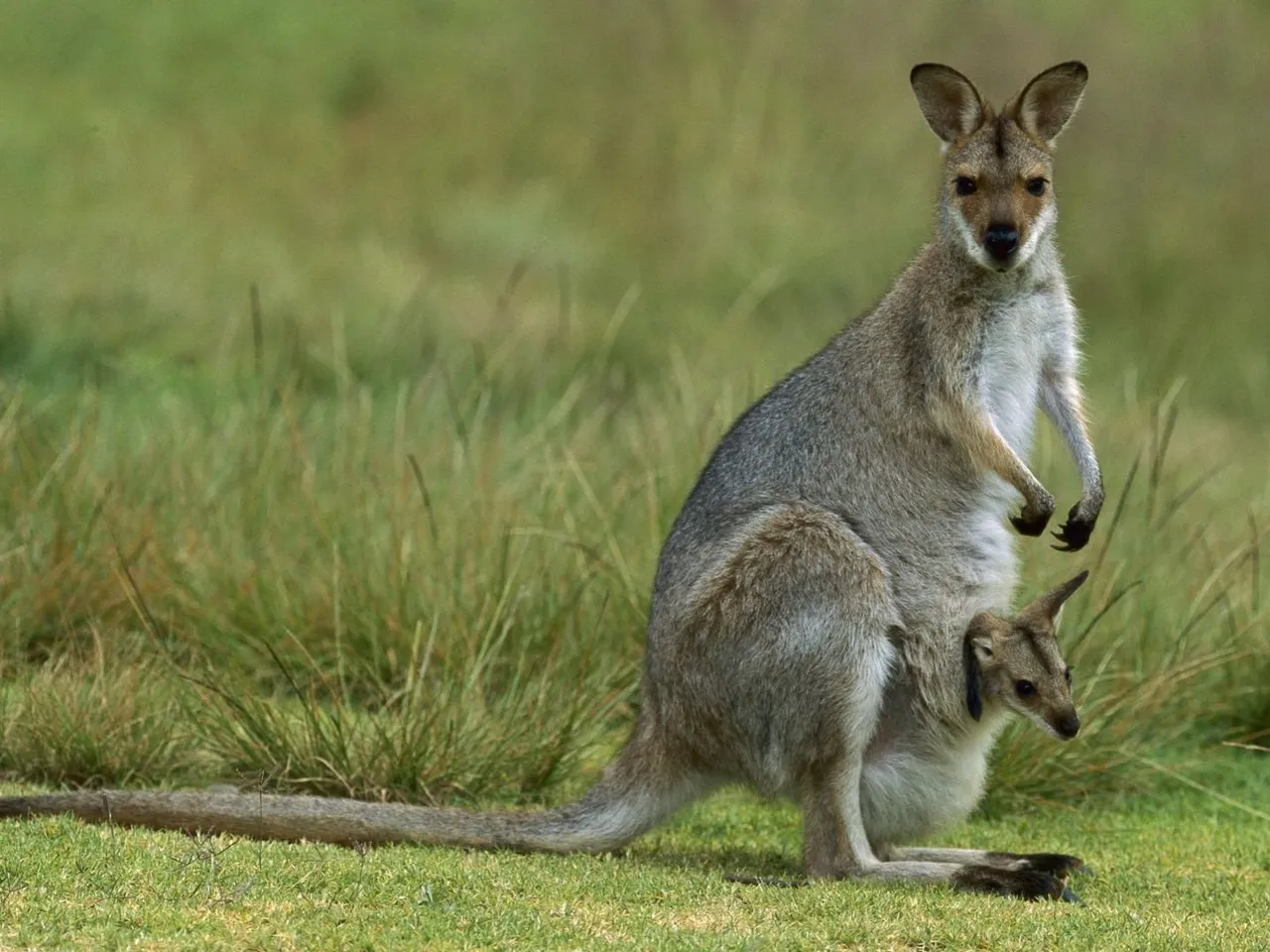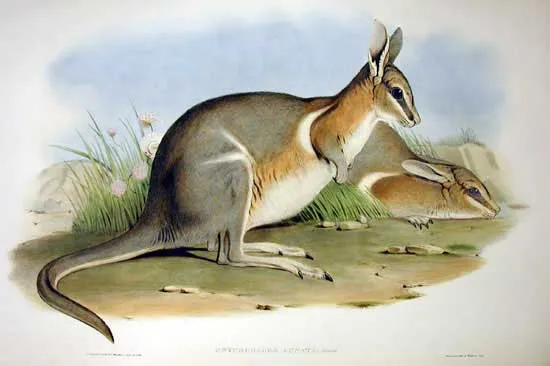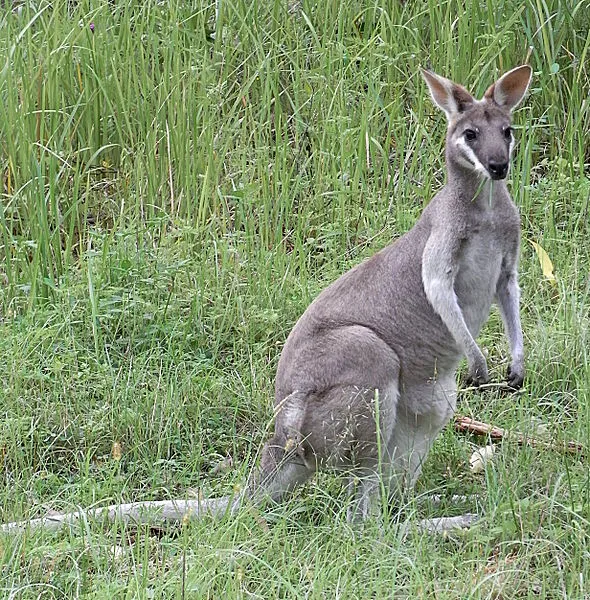The toolache wallaby also known as Grey's wallaby is an extinct species of wallaby from southeastern South Australia and southwestern Victoria. Scientifically it is called Macropus greyi.

The toolache wallaby was a scrannel, graceful, and accomplished animal that had a pale ashy-brown pelt with a buff-yellow underbelly. The tail was closely grey and became almost white near the tip. The distinct black mark on its face reached from its nose to the eye. The limbs, feet, and tips of the ears were also black. The different colors of the animal also consisted of different textured furs which are considered to have changed seasonally or varied depending on the individual. The body measurements differed between males and females. In general, male toolache wallabies had a head and body length up to 810 mm while females measured up as 840 mm. Despite the females being taller, males had longer tail lengths at about 730 mm while the female's tail length was 710 mm.

The toolache wallaby was native to the south-eastern corner of Australia to the western part of Victoria. The favorable habitat ranged from swampy short grassland areas, to taller grassed areas of the open country. Toolache wallabies were known to be associative creatures who lived in groups; they were often seen resting and grazing in groups.
An amalgamation of numerous threats caused the decline and eventual extinction of the toolache wallaby. One of the major factors was the destruction of its habitat. Since swamps were an essential part of its habitat, once they were cleared out, much of the vegetation went with it. Besides the decimation of its habitat, the introduction of predators such as the European Fox began to kill off the species as well. On top of all this, the animal was also preyed for sport and for its beautiful pelt.

The toolache wallaby only last 85 years after European occupation. In the 1920s, a conservation effort was made to try and bring the animal back from the verge of extinction. The plan was to addopt and breed the last known surviving members of the species in captivity. Consequently this effort ended in disaster after 10 of the 14 of them were accidentally killed in the attempt to capture them. The remaining four survived in captivity. The last wild sightings were founded in 1924, and the last known toolache wallaby survived in captivity until 1937. The species is assumed to be extinct although extensive research is still being conducted in the region after reports of suspected sightings through the 1970s. However, no members of the species have been sighted yet.